ERIOBOTRYA
Eriobotrya Lind., Trans. Linn. Soc. London,13: 102 1821; Fl. China @ eFloras.org 9: 138; Phipps, Fl. North Amer. @ eFloras.org vol. 9.
Small trees. Branchlets, petioles, leaf blades, inflorescence, bracts, hypanthium and sepals densely rusty tomentose. Stipule subulate, 5-10 mm long. Petiole absent or short, 5-10 mm long. Leaf blades lanceolate, oblanceolate, obovate, or elliptic-oblong, 12-30 cm x 3-9 cm, coriaceous, lateral veins 11 - 12 pairs, base cuneate, margin entire basally, remotely serrate apically, apex acute or acuminate, abaxially rusty tomentose, adaxially +/- glabrous. Inflorescence terminal panicle 10-19 cm long with stiff branches, many flowered, +/- 50; bracts subulate, 2-5 mm long, Pedicel 2-8 mm. Flowers bisexual, actinomorphic, epigynous, +/- sessile, fragrant, 1.2-2 cm in diam. Hypanthium companulate or shallowly cupular, ca. 5 mm diameter. Calyx lobes 5, triangular-ovate, 2-3 mm, apex acute. Petals white, oblong or ovate, 5-10 mm x ca. 5 mm, apex obtuse or emarginate. Stamens 20, 4-5 mm long. Ovary rusty pubescent apically, 5-locular, with 2 ovules per loculus; styles 5, free, nearly as long as stamens. Pome yellow or orange yellow, globose or obovate, 1-1.5 cm in diam., rusty tomentose, soon glabrescent. Seeds 1-5, black, ovoid, shiny.
35 species
Eriobotrya japonica
Eriobotrya japonica
(Thunb.) Lind., Trans. Linn. Soc. London,13: 102 1821; Parker, For. Fl. Punj. ed. 2: 229. 1918 (Reprint 1973); Fl. China @ eFloras.org 9: 138; Phipps, Fl. North Amer. @ eFloras.org vol. 9; Mespilus japonicaThunb., Nova Acta Regiae Soc. Sci. Upsal. 3: 208. 1780; Rhaphiolepis bibas (Lour.) Galasso & Banfi, Ital. Botanist 9: 66. 2020.
Small evergreen tree, up to 10 m tall. Branchlets yellowish brown, rusty or greyish brown, tomentose. Short shoots absent. Leaves simple, alternate; stipules 1.3-1.5 cm long, lanceolate acuminate, pubescent; leaf blade 15-27 cm x 4-9 cm, lanceolate, oblanceolate or elliptic-oblong, thick, leathery, abaxially densely grey-rusty tomentose, adaxially lustrous, margin remotely serrate, apex acuminate, base narrowed into a very stout wooly 6-10 mm long petiole; secondary veins 12-18-paired. Inflorescence a panicle, 10-20 cm long, with many congested flowers, peduncle and branches thick, stout, densely rusty tomentose; bracts ca. 5 mm long, +/- lanceolate, densely rusty tomentose. Pedicels 2-8 mm long, stout, rusty tomentose. Flowers bisexual, actinomorphic, epigynous, fragrant, ca. 1.2-1.3 cm long and ca. 2 cm across, cream-coloured. Hypanthium 6-7 mm x 6-7 mm, shallowly cupulate, outside rusty tomentose. Calyx and corolla at the rim of hypanthium. Sepals 5, suberect, triangular, ca. 2 mm long, abaxially densely dusty tomentose, apex obtuse. Petals 5, free, white or cream-coloured, oblong or ovate, 5-9 mm x 4-6 mm, clawed, claw ca. 1 mm long, apex rounded or emarginate. Stamens usually 20, free, incurved, inserted in hypanthium near rim; filaments 4-5 mm long, slender, broad below tapering gradually towards apex; anthers oblong-ovate, 1-1.5 mm long. Ovary inferior, rusty pubescent apically, 5-locular, with 2 ovules per loculus; style 5, free; stigmas capitate. Fruit pome, succulent, formed from hypanthium, borne in clusters, globose, obovate or pyriform, 2.5-4 + cm long and 1-1.5 cm in diameter, pale yellow to orange; endocarp very thin. Fruit rusty tomentose, soon glabrescent; fruiting pedicel 3-8 mm long. Seeds 2-5, large, angular.
Common Names: Loquat, Japan-Plum, Japanese Medlar, Japanese Loquat, Stinking Toe; Lokat (Hindi)
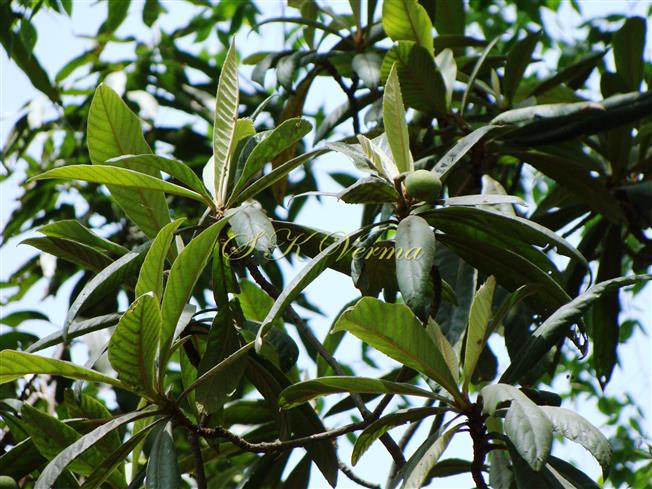
-DSC02228.jpg)
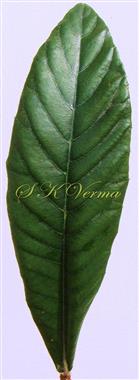
-DSC09740.jpg)
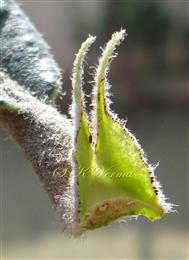
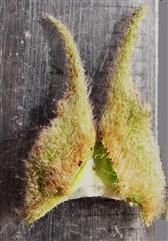
-DSC09731.jpg)
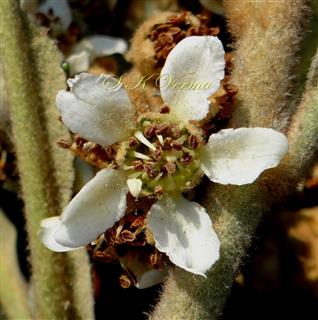
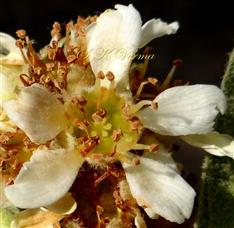

-DSC02241.jpg)
-DSC02244.jpg)
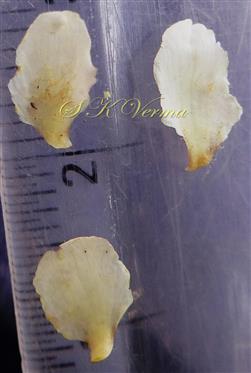
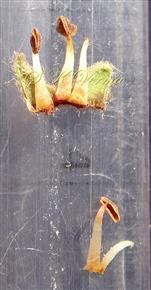
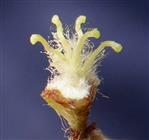
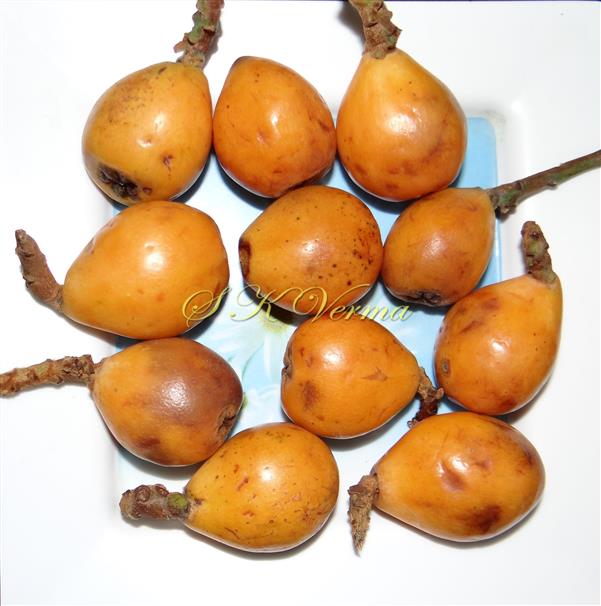
 V.S.-DSC09786.jpg)
 T.S.-DSC09783.jpg)


-DSC02228.jpg)

-DSC09740.jpg)


-DSC09731.jpg)



-DSC02241.jpg)
-DSC02244.jpg)




 V.S.-DSC09786.jpg)
 T.S.-DSC09783.jpg)